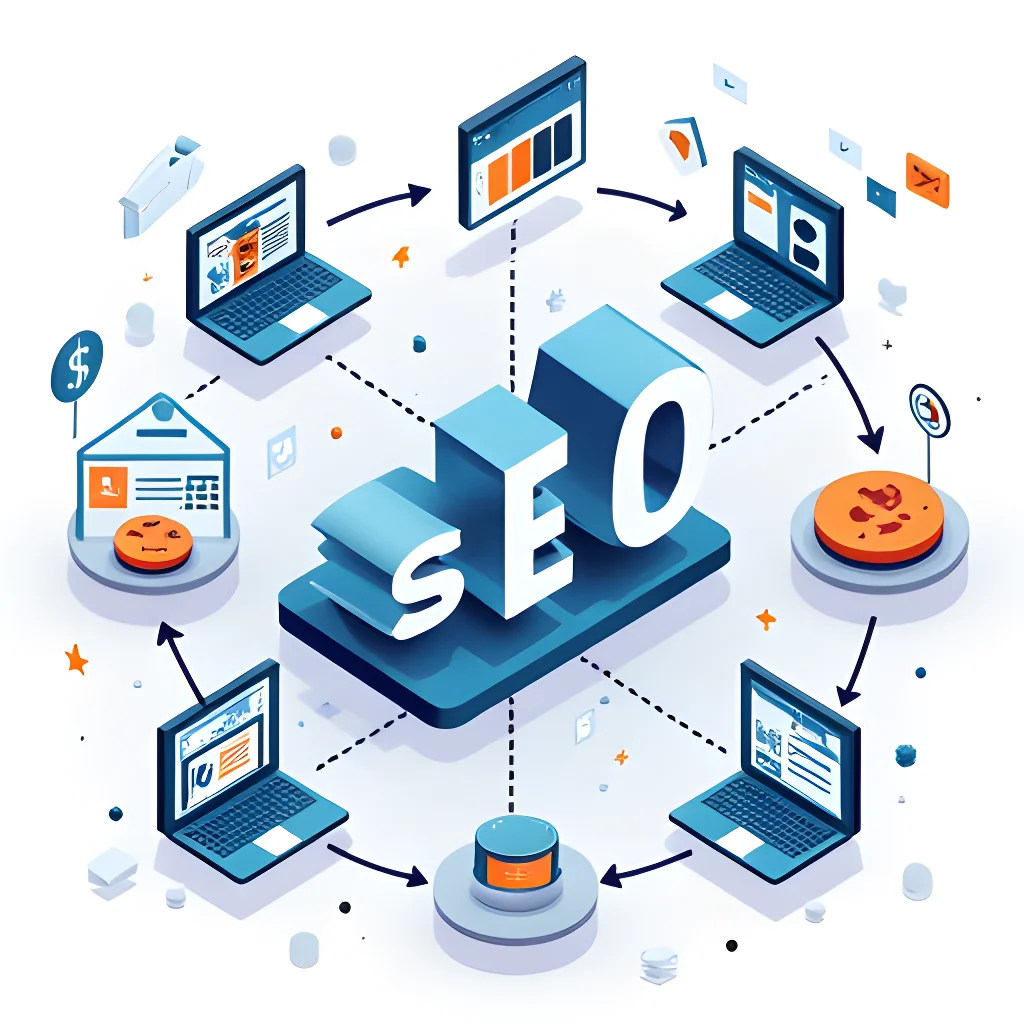Now Reading: 9 Expert Tips to Optimize Product Pages for Conversions
-
01
9 Expert Tips to Optimize Product Pages for Conversions
9 Expert Tips to Optimize Product Pages for Conversions

Your product pages are the digital equivalent of a sales associate – they need to inform, persuade, and close the deal. Yet many ecommerce businesses struggle with optimizing product pages for conversions, leaving significant revenue on the table. In this comprehensive guide, I’ll share battle-tested strategies that have helped countless online stores transform their product pages from passive displays into powerful conversion machines.
Key Takeaways
To optimize ecommerce product pages for higher conversions:
- Use high-quality images and videos that showcase products from multiple angles
- Create compelling, benefit-focused product descriptions
- Implement clear, prominent call-to-action buttons
- Display customer reviews and testimonials as social proof
- Ensure fast loading speeds and mobile optimization
- Include detailed product specifications and sizing information
- Create urgency with limited-time offers or low-stock notifications
- Simplify the checkout process to reduce abandonment
High-Quality Visuals That Convert
When optimizing product pages for conversions, nothing matters more than your visual presentation. High-quality images play a pivotal role in helping customers visualize products they can’t physically touch or try. According to research, product pages with multiple high-resolution images significantly outperform those with single or low-quality visuals.
I recommend showcasing your products from every possible angle. This comprehensive visual approach reduces uncertainty and builds confidence in your store. Professional photography is worth the investment as it builds trust and makes customers feel secure in their purchase decisions.
Don’t stop at static images. Videos are incredibly powerful for demonstrating how products work in real-world situations. They give customers a better understanding of size, functionality, and features that might not be apparent in photos alone. Consider implementing 360° views as well, which allow customers to explore products from every angle, creating a more immersive shopping experience.
Remember that image optimization goes beyond just visual quality. Proper image SEO includes:
- Descriptive image filenames
- Accurate alt text that helps both search engines and visually impaired users
- Compressed file sizes for faster loading without sacrificing quality
- Structured data markup for better search visibility
When implementing these visual strategies, I’ve seen conversion rates increase by as much as 30% for clients who upgraded from basic product photography to comprehensive visual presentations.
Useful Articles:
Compelling Product Descriptions That Sell
Your product descriptions should do more than just list features-they need to tell a story that connects emotionally with your audience. When optimizing product pages for conversions, focus on creating descriptions that highlight both features and benefits, answering the crucial question: “What’s in it for me?”
I recommend using a bullet-point format with icons to highlight key features rather than long paragraphs. This makes information scannable and digestible. The easier it is for customers to scan your page, the faster they’ll convert.
For maximum impact, your product descriptions should:
- Address customer pain points and explain how your product solves them
- Use descriptive, sensory language that helps customers imagine using the product
- Include technical specifications for comparison shoppers
- Maintain a consistent tone that reflects your brand voice
- Naturally incorporate relevant keywords for SEO benefits
Product title optimization is equally important. Your titles should instantly communicate the main feature or selling point without requiring customers to read the full description. Effective titles are easy to read, include main keywords, and stand out among competing products.
Avoid keyword stuffing in both titles and descriptions. While you want to reach character limits for SEO purposes, readability should never be sacrificed. If your content is unreadable, buyers will skip it, relying more heavily on images and reviews to make decisions.
Strategic Call-to-Action Implementation
Your call-to-action (CTA) buttons are perhaps the most critical conversion elements on your product pages. When optimizing product pages for conversions, ensure your CTAs are visible, accessible, and compelling.
I’ve found that using contrasting colors for CTA buttons significantly increases their visibility. The button should stand out from the rest of your page, drawing the eye naturally. Remove surrounding clutter to make it easy for customers to click.
Consider these strategic CTA implementations:
- Sticky add-to-cart buttons that remain visible as customers scroll through the page
- Responsive CTA buttons that adapt to different screen sizes and devices
- Clear, action-oriented text like “Add to Cart” or “Buy Now” that leaves no ambiguity
- Secondary CTAs like “Add to Wishlist” for customers who aren’t ready to purchase
The “Add to Wishlist” option is particularly effective due to the Zeigarnik effect-the psychological phenomenon where people tend to remember unfinished tasks. When customers add items to wishlists, this effect persists until they complete the purchase.
For products with multiple options (size, color, etc.), make selection simple and error-proof. Clearly indicate which options are selected and provide guidance for choosing the right size or model.
Useful Articles:
Building Trust Through Social Proof
Trust elements are crucial when optimizing product pages for conversions. Customer reviews and testimonials serve as powerful social proof that can significantly boost confidence in your products.
I recommend displaying reviews prominently on your product pages. Consider highlighting particularly positive or detailed reviews that address common customer concerns. This approach not only builds trust but also answers questions potential buyers might have.
Effective ways to leverage social proof include:
- Star ratings that provide quick visual indicators of product quality
- Verified purchase badges that increase review credibility
- User-generated photos showing the product in real-life situations
- Video testimonials for high-value products
- Q&A sections that address common customer concerns
User-generated content (UGC) keeps your product pages fresh with genuine, user-focused information. Search engines favor pages with this type of content, and it builds trust with potential buyers while enhancing engagement.
To maximize the impact of reviews, make it easy for customers to leave detailed feedback. Consider offering incentives or rewards to encourage customers to share their experiences with your products.
Creating Urgency and Scarcity
Creating a sense of urgency and FOMO (Fear Of Missing Out) can effectively drive higher product page conversion rates. When optimizing product pages for conversions, implement tactics that encourage immediate action.
I’ve found these urgency-creating elements to be particularly effective:
- Limited-time offers with countdown timers
- Low-stock notifications (“Only 3 left!”)
- Exclusive deals available for a short period
- Seasonal promotions that create natural time constraints
- Exit-intent popups that present special offers when visitors attempt to leave
These strategies create a sense of urgency that motivates customers to complete their purchases quickly. By leveraging urgency and FOMO, you reduce cart abandonment and increase the likelihood of conversions.
However, I always advise using these tactics honestly and ethically. False scarcity damages trust and can harm your brand’s reputation in the long run.
Useful Articles:
Optimizing Technical Performance
Page speed and technical performance are critical factors when optimizing product pages for conversions. Slow-loading pages frustrate users and significantly increase bounce rates.
I recommend focusing on these technical optimization areas:
- Image compression to reduce file sizes without sacrificing quality
- Lazy loading for images and videos to prioritize above-the-fold content
- Minimizing HTTP requests by combining files where possible
- Browser caching to speed up repeat visits
- Content delivery networks (CDNs) to serve assets from locations closer to users
Mobile optimization is equally important, with more customers shopping on smartphones than ever before. Ensure your product pages are fully responsive and provide an excellent experience on all device sizes.
Technical SEO elements like structured data and product schema also play a vital role in optimization. Implementing schema markup helps search engines understand your product information, potentially leading to rich snippets in search results that can increase click-through rates.
Enhancing Navigation and User Experience
When optimizing product pages for conversions, the overall user experience plays a crucial role in guiding customers toward purchase decisions. Clear navigation and thoughtful page structure help visitors find what they need quickly.
I recommend these navigation and UX improvements:
- Logical product categorization that matches how customers think about your products
- Effective search functionality with filters for refining results
- Breadcrumb navigation to help users understand their location within your site
- Related product suggestions that encourage additional purchases
- Cross-selling opportunities in the mini cart or checkout process
Displaying related and recommended products can enhance your product page conversion by encouraging additional purchases. This approach not only increases the average order value but also provides a personalized shopping experience.
However, be careful not to overwhelm customers with too many options. Limit product recommendations to a few highly relevant items to avoid decision paralysis.
Detailed Product Information
Comprehensive product information is essential when optimizing product pages for conversions. Customers need enough details to make informed purchase decisions and feel confident in their choices.
I recommend including:
- Detailed specifications that answer all potential questions
- Size guides with clear measurements and fitting advice
- Material information with care instructions
- Compatibility details for technical products
- Usage instructions or suggested applications
For products with technical specifications, consider organizing information in tabs or expandable sections to maintain a clean design while providing all necessary details. This approach prevents information overload while ensuring all critical details are available.
FAQs are another valuable addition to product pages. They address common questions and concerns, reducing barriers to purchase. Well-crafted FAQs can also improve SEO by incorporating natural language questions that match search queries.
Streamlining the Checkout Process
Even the most optimized product page won’t convert if the path to purchase is complicated. When optimizing product pages for conversions, consider how smoothly customers can move from product selection to completed purchase.
I recommend these checkout optimization strategies:
- Minimize form fields to reduce friction
- Offer guest checkout options for first-time buyers
- Display multiple payment options prominently
- Show shipping costs early in the process
- Implement progress indicators during multi-step checkouts
Trust signals are particularly important during checkout. Display security badges and secure payment icons to boost confidence in your store. These details signal to customers that their transactions and data are safe, encouraging them to complete their purchases.
Consider implementing cross-selling in the mini cart to increase average order value without disrupting the checkout flow. This subtle approach can boost revenue without creating additional friction.
Continuous Testing and Optimization
Optimizing product pages for conversions is not a one-time effort but an ongoing process of testing and refinement. What works for one product or audience may not work for another.
I recommend implementing:
- A/B testing of different page elements (titles, images, CTAs)
- Heat mapping to understand how users interact with your pages
- User testing to identify friction points and confusion
- Conversion funnel analysis to spot where customers drop off
- Regular performance reviews based on analytics data
When testing, focus on one element at a time to clearly understand what impacts conversions. Prioritize tests based on potential impact and implementation difficulty. Often, small changes to critical elements like CTAs or product images can yield significant results.
Use tools like Google Analytics, Hotjar, and Google Search Console to analyze performance and make data-driven decisions. These insights will help you continuously refine your product pages for maximum conversion potential.
Optimizing product pages for conversions requires a strategic approach that combines compelling visuals, persuasive copy, trust-building elements, and seamless user experience. By implementing the strategies I’ve outlined, you can transform your product pages into powerful sales tools that convert browsers into buyers and casual visitors into loyal customers.



















